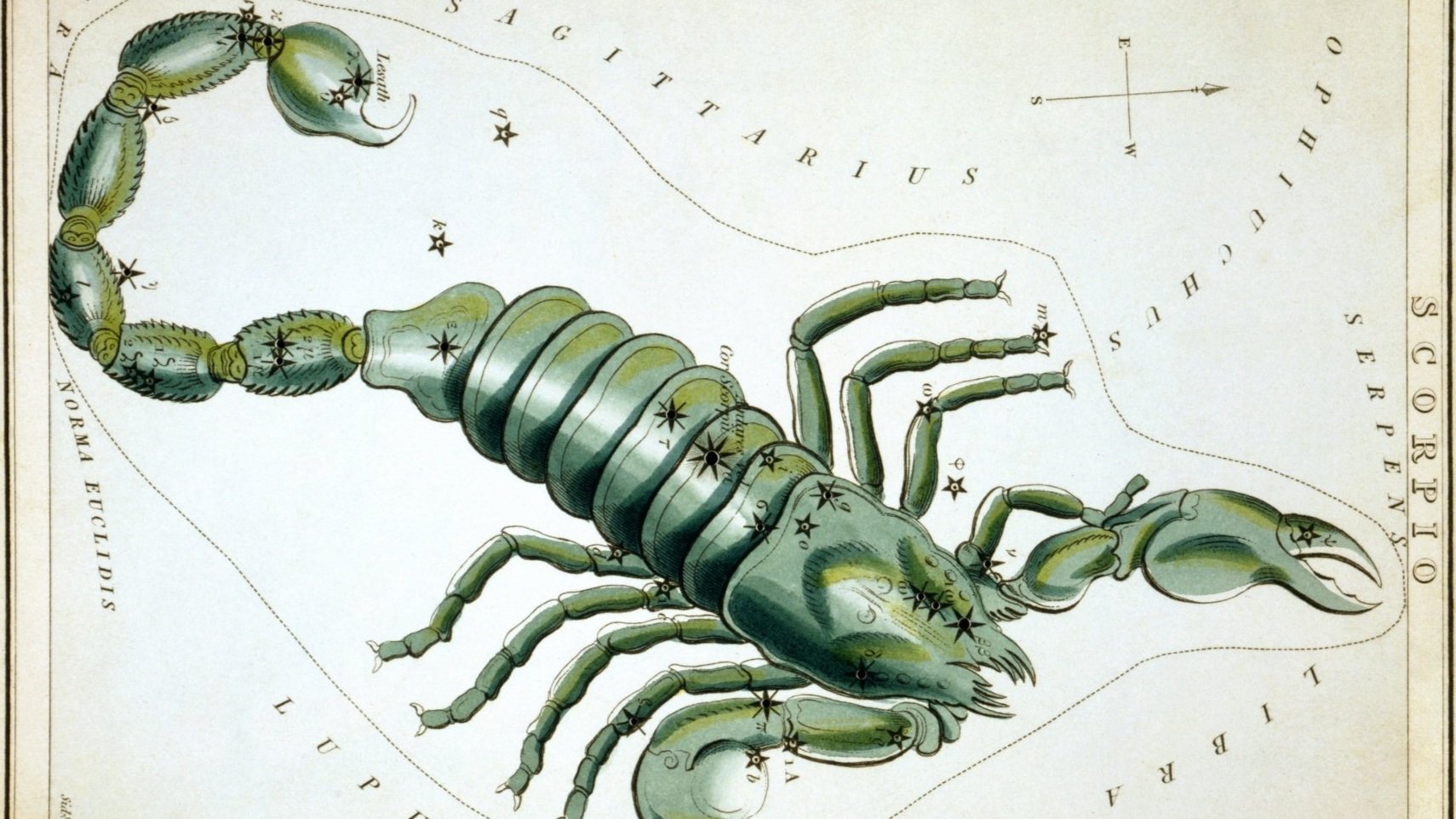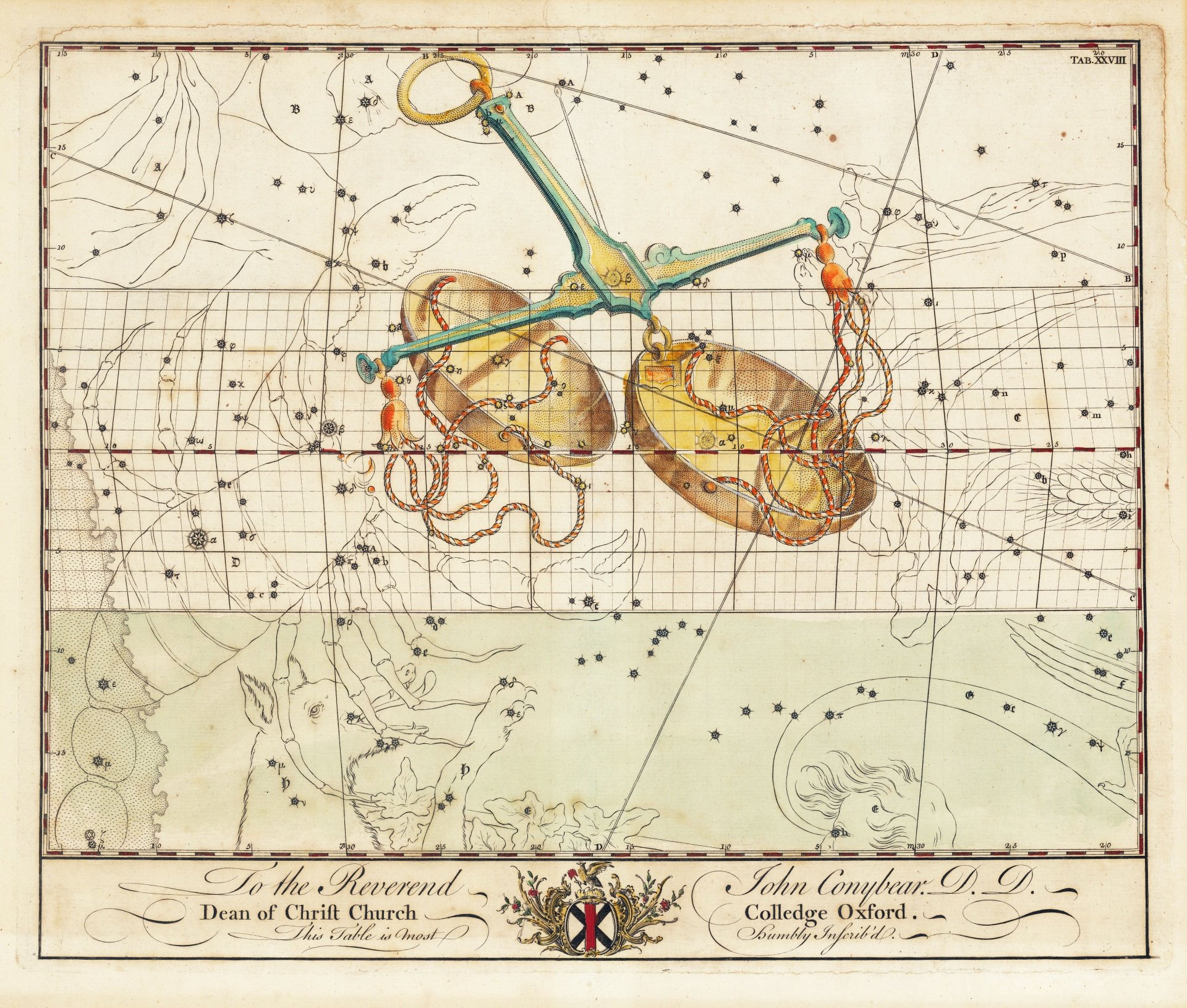Scorpio: surrender + control
In astrology, the archetype of Scorpio exists on a spectrum of surrender and control. By surrendering to what cannot be controlled, by choosing power over force, by demonstrating the ability to control only the self, Scorpio can access an empowered expression of self-actualization. When we refuse to engage in a power struggle that was never ours to control in the first place, we liberate ourselves, achieving freedom from the trap of control issues that leave us disempowered and exhausted.
The archetype of Scorpio exists on a spectrum of surrender and control. By surrendering to what cannot be controlled, by choosing power over force, by demonstrating the ability to control only the self, Scorpio can access an empowered expression of self-actualization. When we refuse to engage in a power struggle that was never ours to control in the first place, we liberate ourselves, achieving freedom from the trap of control issues that leave us disempowered and exhausted.
Scorpio manages the realms of secrets, power, trauma, sexuality, and the hidden depths. One of the most powerful commitments any of us can make is one of trust in the self and the divine, ultimately one in same.
When we swallow poison, the harm caused by another, it becomes an opportunity to heal, to tend to our wound, and process the vulnerability, the pain, the betrayal. When we offer ourselves the grace, the antidote to our wound, we make space for the healing cycle to begin. If instead, we hold on to the trauma, turning it over and over, clutching it close as a key part of our identity, we are promised greater suffering. Scorpio is a mark of the healer and in our astrological charts, it speaks to where we must heal old ancestral wounds and unearth secrets of trauma and betrayal.
Scorpio is a water sign in the fixed mode. This means that while it has all the emotional, intuitive, and liquid qualities of water, the fixed mode gives it the solid, contained, and rigid textures of the fixed mode. This can make the Scorpio uniquely capable of holding emotional truth and operating with intuitive discernment. By the same token, if we consider what it means for water to be contained and rigid, we could describe it as a block of ice or a well.
To explore the well metaphor, what happens when poison lands in a well?
The entire well is poisoned. The walls hold the water, now tainted by pain and wounding and the only solution is to find an antidote to the poison.
By holding onto the pain, the trauma of betrayal, and treachery, we keep the poisoned water of the well inside. But when we finally offer ourselves forgiveness, we become the antidote to our own suffering. Often times when we experience a brutal loss or trauma, it is not an apology or amends from the offending party that is the solution to our pain, but the forgiveness and grace we offer ourselves for not being able to protect ourselves, for not maintaining control when we so wish we could have, that will heal our wound. If we can return to ourselves, commit to trusting ourselves to craft the antidote that we need, we can transform our reality and heal.
As a master of transformation and transmutation, the Scorpio archetype is not only embodied and depicted by the form of the Scorpion but by two other incarnations.
The Scorpion
The scorpion is reactive, aggressive, sharp, and biting. It can express possessiveness, it keeps secrets, and refuses to admit emotional vulnerability. The scorpion is prone to jealousy and holds grudges, never letting go of the past, choosing instead to hold resentment and anger. In this way the scorpion can poison itself by refusing to heal from wounds it alone must tend to.
The Eagle
The eagle has achieved more liberty and perspective, no longer crawling on the earth or drinking its own poison. The eagle takes an elevated approach though still deeply judgemental and razor-sharp in its approach. The awareness and presence of the eagle is powerful and even lethal but it is still deeply self-protective and unwilling to find grace in vulnerability.
The Phoenix
Finally, the phoenix embodies the transformation of compassion for the self and the healing balm it can create. By accessing the antidote to the poison from traumas beyond its control, the phoenix can find alchemical solutions to powerlessness by asserting the power that resides within. Surrendering to what cannot be controlled and choosing to control the only entity within our control, ourselves, offers the phoenix a chance to rise from the ashes, stronger than ever before. All this can be achieved by trusting the self and relinquishing the urge to control what is beyond our power.
The magick of Scorpio is to transcend and transform through the discipline of trust. When we trust ourselves to be present and mindful through the process of healing, when we forgive ourselves for being wounded and vulnerable, we access the blessing of transformational liberation.
Scorpio speaks from desire.
As shown in the etymology of the word desire, there is something greater than wanting in the expression of desire. It is not just lust or covetousness, it is an inspiration of longing from beyond, from a heavenly body, one that is set upon a soul with celestial significance. It is a sacred wanting, the expression of desire and it can lead us to purpose.
To express desire is to be vulnerable in longing. It acknowledges a force external to our own power, one that moves us to action and inspires feeling. For Scorpio to truly embody its power, it must acknowledge its vulnerability and learn to trust in what it can control and honor what it must surrender to. Empowerment is not the absence of vulnerability but the awareness of desire, the willingness to be inspired, and the compassion to offer healing and forgiveness.
Libra: The Divine Lessons of balance
The divine lessons of Libra invite us to collaborate and cooperate. The trick is to avoid conjoining, losing the tension that creates the limitations required for creative success. In any good collaboration, there is true divinity in asserting individuality as much as making room for commonality.
How do we describe Libra?
The divine lessons of Libra invite us to collaborate and cooperate. The trick is to avoid conjoining, losing the tension that creates the limitations required for creative success. In any good collaboration, there is true divinity in asserting individuality as much as making room for commonality. Harmony is not made beautiful simply by similarity, but through the divine tension between alignment and variance. The best collaborations allow both voices to be heard, both messages to be sent and received, both creators to be challenged, inspired, and admired in connection to a whole that is greater than the sum of either of its parts.
Libra is a love scholar that teaches us through the spectrum of individuation and cooperation. She is the most magickal when she can embody mutuality and independence in one breath.
Libra teaches us lessons of balance.
Very often we learn through the inverse; we may be taught to be gentle through experiences with roughness, we may be taught generosity through selfishness, and we may learn to value connection through lessons of isolation. Libra lessons often come from moving too far in one direction only to have the pendulum return so quickly it’s momentum carries it again, too far in the other direction.
I often witness and experience the lessons of codependency and interdependence in this same swing of the pendulum or struggle to balance scales, to add a new metaphor. For those who were challenged with parentification, who became care takers far too young, the urge to take care is now likely just as strong and the urge to reject care for ourselves. Then, as awareness and healing repair the wound, both the urgency around caring for other and the readiness to be cared for become easier, more available, and less likely to generate activation and reactivity. As things become even more balanced in the healing process, the willingness to allow others to suffer the consequences of their actions begins to expand, and new cycles in the spiral that is healing and balancing are discovered.
What does Libra look like?
She is a gallery, refined, thoughtful, full of tasteful art and reflections of aesthetic symmetry and creativity of the highest value. She is the mark of civilization, of things made legible, clarified, defined and named beautiful for their purity.
What does Libra feel like?
She is most empowered with clear and healthy boundaries. She is most exalted with structure, discipline, limitations, and a clear ethical code. She is dignified in devotion to diplomacy, cooperation, and collaboration. She if soft to the touch but cool and balanced by her careful restraint. Libra feels like the satisfaction of justice.
What does Libra taste like?
She is mild, likeable, even, and appealing. She is a well-balanced wine, refined with time. She is a perfectly ripe fruit at the balance of the equinox.
What does Libra smell like?
If Libra were a perfume she would be gentle, soothing but heady. She would be a scent that is hard to forget but never challenging. She would be clean, pure, and decisively ripe without ever becoming overpowering or unfairly assertive.
The Mythology Connected to the Libra Constellation
The constellation of Libra is considered to be the Titan Goddess Themis who was sister to Nemesis and second wife to Zeus. She is the goddess of justice, legislation, divine law, and harmony with nature. She carries a sword to cut the truth from the lies, and her scales are the symbol of the justice she upholds. Themis is the Goddess of peacemaking, balance, seeing other’s point of view, along with divine awareness, and social graces. If disregarded, it is her sister, Nemesis, who punishes. Nemesis is the consequence of failure to regard Themis and her Libra qualities.
This narrative again conjures the awareness of collaboration and balance. The Libra Titan herself does not operate alone, but she is still quite individual. She is interdependent, offering her magick in divine cooperation with her sister.
The same could be said of her relationship to Zeus. Through this collaboration she birthed the three Horai and the three Morai. While the Horai governed the measure of time, the orderliness of divine law, the Morai determined the path of fate, the purpose and the process of divine law. Even her offspring cooperate to create a sense of order, of fairness, and of divine balance.
The Aquarius Archetype: Understanding The Water Bearer
It is not, as Descartes would have us believe, “I think therefore I am.” But instead, it is I feel therefore I am.
Why is Aquarius the water bearer but an air sign?
Does understanding this peculiarity illuminate how we understand the Aquarian archetype? Let’s find out.
I was pondering this matter in preparation for Aquarius season and in honor of my husband who is born right at the very beginning of Aquarius season. Suddenly something clicked when I considered Mark Solms’ latest discoveries in neuropsychology. I highly recommend watching the linked video but the abridged version is, neuroscience has long considered the cerebral cortex to be the seat of our consciousness, however, new evidence suggests it is the brain stem, the emotional and primal locus in our brain, that is the seat of our consciousness.
It is not, as Descartes would have us believe “I think therefore I am.” But instead, it is I feel therefore I am.
Consciousness and what it is, where it is, and how we define it, is a great debate, one that has been discussed since the forums of ancient times.
Since modern science has long considered consciousness to reside in the cerebral cortex, the distinctly human part of the brain, it could be argued that this line of thinking has contributed to the human propensity for exceptionalism and even elitism. This line of thinking has been used to perpetuate eugenics and other racist theories along with distancing human beings from the rest of the animal species that occupy our Earthly habitats. In my undergraduate thesis, I posit that it is in part this exceptionalism and the language that has developed around this construct that has cost especially white folks, particularly those in America, their sustainable relationship with the environment. In an effort to distinguish white folks and whiteness from the Other and from animals, religious and political voices promoted exceptionalism and distinction from the Earth and the natural world. Today it has proven to be a convoluted challenge for white folks and many Americans to take responsibility for their impact on the environment and practices of sustainability.
In this vain, I often ask, how conscientious is the animal that destroys its own habitat?
So what if we consider Solms’ findings? What if we assume his discovery of consciousness as residing in the brain stem is correct? First, we must recognize that many many other species share this part of the brain, and next, we must consider the nature of the impulses that emanate from our brain stem. It is an emotional, instinctive core, and dare I say, an intuitive center. Suddenly it is not our intellectualism that proves our consciousness but our emotionality, our intuitive nature that confirms our consciousness. “Raw feelings are the fundamental form of consciousness,” says Solms, later explaining that this is a survival tactic. The ability to feel allows us to react appropriately to danger. If we were unable to feel suffocation, we would fail to at least attempt to remove ourselves from a burning building, for example. We do not intentionally process the notion that we are gasping for air, we feel the urgency and need to escape danger and return to the kind of breathing that requires none of our attention.
Consciousness is often associated with presence and awareness. With this and Solms’ findings in mind, I agree that feelings and our emotional experiences are our most conscious states.
It is a presence described by our responsiveness to the current moment.
Now let’s consider the elements of water and air along with their archetypes. Water represents an emotional, intuitive, and feeling archetype. Air is a cognitive, intellectual, and communicative archetype. Aquarius is an air sign, and the zodiac that is archetypally associated with systems of ideas, higher consciousness, and collective communications. For Aquarius to be a water bearer but an air sign, is, as we have established, somewhat curious if not mystifying.
So what if we consider Aquarius the water bearer, the archetype of intellectual innovation, systemic psychology, and collective understanding, the structure by which consciousness, Solms’ emotionally defined consciousness, can be contained? Without a vessel, consciousness is another ingredient in the primordial soup. But with the vessel of the Aquarian, the emotional consciousness can be carried, contained, and sustained. It is not at all that the Aquarian is an emotional archetype but instead that it is the one that offers a container for emotionality, thus giving space and form to our collective consciousness.













